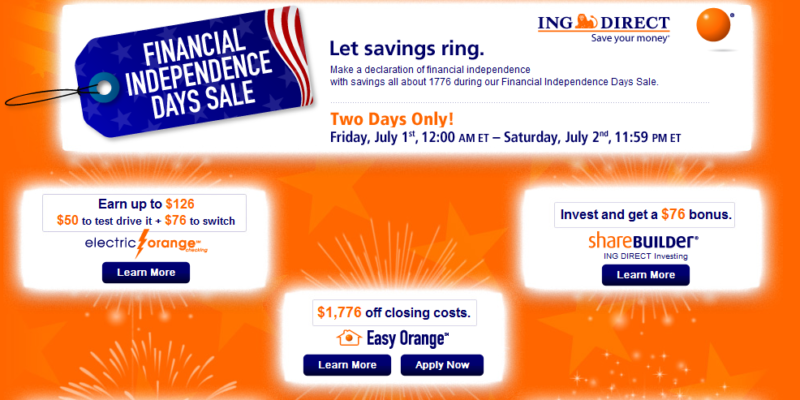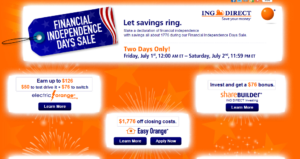Please email me at:
Or use the form below.
[contact-form 1 “Contact form 1”]
The no-pants guide to spending, saving, and thriving in the real world.
This post from CNN Money has been making the rounds. I’m getting into the game today.
With the holiday season upon us, tipping the people you work with is a tradition in some cases and actually expected in others. Here’s what CNN came up with and my take:
If the majority of people are giving Christmas bonuses to that many people, and are as generous as the article suggests, then I fall far to the loutish end of the bell curve. I am planning to give my virtual assistant 1/12 of the pay he’s earned this year, so that should make up for some of it, but that is an ongoing business relationship.
How do you compare when it comes to holiday tipping?

When you’re setting up a niche site, you need to monetize it. You need to have a way to make money, or it’s a waste of time.
There are two main ways to do that: AdSense or product promotion. To set up an AdSense site, you write a bunch of articles, post them on a website with some Google ads, and wait for the money to roll in.
I don’t do that.
I don’t own a single AdSense site and have never set one up. This article is not about setting up an Adsense site.
My niches site are all product-promotion sites. I pick a product–generally an e-book or video course–and set up a site dedicated to it.
Naturally, picking a good product is an important part of the equation.
The most important part of product selection is that the product has an affiliate program. Without that, there’s no money to be made. There are a lot of places to find affiliate programs. Here are a few:
The first thing you need to do is sign up for whichever program you intend to use.
If you’re not going with Clickbank, feel free to skip ahead to the section on keyword research.
Once you are signed up and logged in, click on the “Marketplace” link at the top of the screen.
From here, it’s just a matter of finding a good product to sell. Here are the niches we’re going to be looking for:
I’m going to look for one or two good products in each niche. When that’s done we’ll narrow it down by consumer demand.
For now, go to advanced search.
Enter your keyword, pick the category and set the advanced search stats. Gravity is the number of affiliates who have made sales in the last month. I don’t like super-high numbers, but I also want to make sure that the item is sellable. Over 10 and under 50 or so seems to be a good balance.
The average sale just ensures that I’ll make a decent amount of money when someone buys the product. I usually aim for $25 or more in commissions per sale. Also, further down, check the affiliate tools box. That means the seller will have some resources for you to use.
This combination will give us 36 products to check out for back pain, unfortunately, none of the results are for back pain products. After unchecking the affiliate tools and setting the gravity to greater than 1, I’ve got 211 results. Sorting by keyword relevance, I see three products, two of which look like something I’d be interested in promoting. One has a 45% commission, the other is 55%. The X-Pain Method has an initial commission of $34 and claims a 5% refund rate. Back Pain, Sciatica, and Bulging Disc Relief pays $16, which will make it a potentially easier sale. I’ll add both to the list for further research.
I’m not going to detail the search for the rest of the niches. That would be repetitive. You can see my selections here:
Now we’re going to go through a few steps for each of these products.
We need to make sure the sales page doesn’t suck. If the site doesn’t work, is hard to read or navigate, has a hard-to-find order button, or just doesn’t look professional, it’s getting cut.
If it has an email subscription form, we’ll need to subscribe, then double-check to make sure our affiliate information isn’t getting dropped in the emails. If it is, the seller is effectively stealing commissions. In the interest of time and laziness, I’m going to eliminate anyone pushing for an email subscription. It’s harder–and time-consuming–to monitor that. On of my niche site had a seller completely drop their product. Instead, they pushed for email subscriptions so they could promote other products as an affiliate. Absolutely unethical.
Finally, we’re going to visit the checkout page. You need to do this from every links in the newsletter and the links on the sales page, just to make sure you’ll get your money.
The way to tell who’s being credited is to look at the bottom of the order page, under the payment information. It should say [affiliate = xxx] where xxxis your ClickBank ID. Anything else, and the product gets cut from the list.
When you are checking these, don’t click on every possible link at once. That confuses the cookies. Do one at a time. I tried to do it in one batch for this post and lost half of the cookies. If it weren’t for the fact that I already own one of the products and bought it through my own link and got credited, I would have been talking undeserved trash about thieving companies.
Sometimes, when you’re examining a product, it just doesn’t feel right. When that happens, drop it. There are millions of other products you can promote. In this case, I’m dropping the anger management program because, in my experience, angry people don’t think they are the problem. Here’s a life tip: If everyone else is a jerk, the problem probably isn’t everyone else.
Now we’re down to 10 products in 6 niches. At this point, we’re comfortable with the sales pages and we know that they are crediting commissions. As it stands right now, all of the products are worth promoting.
We’ll make the final determination after doing some heavy keyword research in the next installment. That’s where we’ll find out how hard it is to compete.
Any questions?
Debt can be thought of as a disease–probably social. Most of the time, it was acquired through poor decision making, possibly while competing with your friends, occasionally after having a few too many, often as an ego boost. Unfortunately, you can’t make it go away with a simple shot of penicillin. It takes work, commitment and dedication. Here are three steps to treating this particular affliction.
1. Burn it, bash it, torch it, toss it, disinfect. Get rid of the things that enable you to accumulate debt. If you keep using debt as debt, you will never have it all paid off. That’s like only taking 3 days of a 10 day antibiotic. Do you really want that itchy rash bloodsucking debt rearing its ugly head when you’ve got an important destination for your money? Take steps to protect yourself. Wrap that debt up and keep it away.
2. Quit buying stuff. Chances are, you have enough stuff. Do you really need that Tusken Raider bobble-head or the brushed titanium spork? They may make you feel better in the short term, but after breakfast, what have you gained? A fleeting memory, a bit of cleanup, and an odd ache that you can’t quite explain to your friends. Only buy the stuff you need, and make it things you will keep forever. If you do need to indulge, hold off for 30 days to see if it’s really worthwhile. If it’s really worth having, you can scratch that itch in a month with far fewer regrets.
3. Spend less. This is the obvious one. The simple one. The one that makes breaking a heroin addiction look like a cake-walk(My apologies to recovering heroin addicts. If you’re to the point that personal finance is important to you, you’ve come a long way. Congratulations!). Cut your bills, increase your income. Do whatever it takes to lower your bottom line and raise your top line. Call your utilities. If they are going to take your money, make them work for it. If they can’t buy you drinks or lower your payments, get them out of your life. There’s almost always an alternative. Don’t be afraid to banish your toxic payments. Eliminate your debt payments. This page has a useful guide to debt and how to clear it off.
Update: This post has been included in the Festival of Frugality.
Last night, we went grocery shopping. I found a beautiful pork roast, just begging to come home with me. It could spend all day Sunday in the smoker. Rub some brown sugar and garlic on the outside, maybe use a mix of maple and cherry wood chips to turn my pork butt into breakfast food. Picture this: a beautiful chunk of slow-cooked pork butt, covered in a candied crust, falling apart at the lightest touch, and tasting faintly of maple syrup.
It was love.
This morning, I woke up, walked into the kitchen to make some breakfast, and saw that beautiful butt sitting on the counter. Room temperature meat, ruined by my negligence. $15 in the trash.
We got back late last night, and apparently set this wonderful piece of future-food down with the non-refrigerated items were were planning to put away later. We said good-bye to the sitter, chased the kids to bed, picked up the house a bit, and forgot about my new love.
I’m sad.
Here’s my advice: When you get home from grocery shopping, immediately put all of the groceries away. Let the kids juggle knives for a bit, if you have to, but get the food put away. If that’s not going to work, at least take it all out of the shopping bags so you can check your work.
There are starving kids in Iowa. Don’t let potential candied pork roast go to waste.


I just got an email from INGDirect. To celebrate Independence Day, they are having a sweet, sweet sale.
You can:
Take advantage of all of that and you’ll get $2054 in cash or discounts.
Seriously, this deal rocks. If you don’t have an INGDirect account, get one. There are no overdraft fees and no monthly fees.
The sale ends tomorrow at midnight, so hurry.